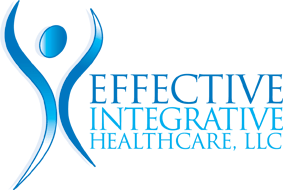10 Drug-Free Ways to Ease Chronic Pain

According to a study conducted by the Institute of Medicine, at least 116 million US adults—more than the number of people living with heart disease, diabetes, and cancer combined—deal with chronic pain each year. The estimated annual economic cost of chronic pain is $560 to $630 billion in healthcare expenses and lost productivity.
The doctors at Effective Integrative Healthcare are dedicated to helping our patients find drug-free treatments to minimize pain resulting from many diverse ailments. Our ultimate goal is to help restore mobility and normal daily function to patients who thought they would never experience a pain-free way of life again—all without medication. Learn more about the negative side effects of painkillers and the drug-free chronic pain relief treatments available at our Crofton and Millersville, MD, office locations.
The Dangers of Pain Medication
If you live with chronic pain, you know it can be debilitating. To help you get through the day, you may turn to over-the-counter pain medication. And when that’s not enough, you may ask your doctor for prescription painkillers. While there are certain times when responsibly prescribed medication is useful, drugs are rife with dangerous side effects. Here’s a look at some of the most common painkillers and what you should know before taking them.
Side Effects of Over-the-Counter Pain Medicine
The most commonly taken painkillers are those you can buy without a prescription, including acetaminophen, ibuprofen, aspirin, and naproxen. The most widespread side effect of these medicines is damage to the stomach, kidney, or liver, especially when taken. These and other risks increase if you take the medication every day, in excessive doses, or while drinking alcohol.
Non-steroidal anti-inflammatory drugs (NSAIDs), including aspirin and naproxen, also increase the risk of bleeding and prevent blood clots from forming. As a result, NSAIDs are not recommended for people with a higher risk of heart attack or stroke. In addition, you shouldn’t give NSAIDs to children because of a life-threatening condition that may develop called Reye’s syndrome.
Side Effects of Prescription Pain Medicine
More potent prescription opioid drugs—such as codeine, morphine, and oxycodone—have additional risks and side effects. These may include:
- Constipation
- Nausea
- Drowsiness
- Dizziness
- Itching
- Sweating
- Depression
- Weakened immune system
- Tolerance (over time, the body requires more of the drug to get the same effect)
- Addiction (your body craves the drug even when you don’t need it anymore)
Only a small percentage of people who take opioids as prescribed become addicted. Still, more and more doctors are prescribing them, and the risk of addiction increases the longer you take them. As a result, drug abuse and overdoses have spiked sharply in recent years.
According to the National Institute on Drug Abuse, opioid overdose deaths rose from over 20,000 cases in 2010 to around 50,000 in 2019. This number spiked again in 2020 to nearly 70,000 overdose deaths. While only about 6,000 overdose deaths in 2020 stemmed from prescription opioids, every overdose is an avoidable tragedy.
Drug-Free Chronic Pain Relief
Drug-free therapies don’t carry the risk of side effects that often accompany pain medication. That’s why an increasing number of people with chronic pain look to these treatments as alternatives to traditional pharmaceuticals. If you are among this group, rest assured that you can achieve chronic pain relief without drugs. Here are 10 treatment options to consider from Effective Integrative Healthcare.
Massage Therapy
Any chronic pain stemming from muscle tension, spasms, scar tissue, joint pain, or poor posture could benefit from massage therapy. The goal of this treatment is to help your muscles relax, improve your range of motion, and increase circulation. Therapeutic massage can even relieve stress, improve sleep, and strengthen your immune system, all of which play a role in easing chronic pain.
Physical Therapy
For many people, moving through guided stretches and exercises is an effective way to reduce chronic pain. A physical therapist can help strengthen your muscles to improve the support of aching joints. Increased flexibility also helps restore your range of motion, so you can move more freely and with less pain. Stretches and exercises are the cornerstones of traditional physical therapy, but your rehabilitation may include some of the other treatments listed here.
Chiropractic Care
A chiropractic adjustment is the realigning of the spine, whether through manual hand movements or the use of handheld instruments. Chiropractors specialize in resolving pain and improving mobility by manipulating the spine and other joints throughout the body. Still, your treatment may include other advanced modalities to complement the benefits of traditional chiropractic care.
Acupuncture
As a key component of traditional Chinese medicine, acupuncture is rising in popularity among Western healthcare providers and patients. The technique involves inserting thin, sterile needles into the skin at precise points with the intent of clearing energy channels and restoring balance within the body. Acupuncture has been shown to provide chronic neck and back pain relief, as well as help with arthritis, migraines, carpal tunnel syndrome, and much more. This therapy produces the best results when combined with other drug-free chronic pain relief treatments.
Gel Knee Injections
Pain relief injections come in many forms. One option, known as gel knee injections, involves delivering a simple gel made of refined sodium hyaluronate to relieve symptoms of osteoarthritis of the knee. The natural material used to cushion and lubricate your knee is present in the synovial fluid found in healthy joints. Medical professionals have used gel knee injections to provide temporary pain relief for over 20 years without the adverse side effects of corticosteroid injections.
Spinal Decompression
If your chronic back or neck pain is the result of degenerative disc disease, osteoarthritis of the spine, sciatica, posterior facet syndrome, or other chronic conditions, spinal decompression may help. This nonsurgical technique gently stretches and elongates the spine into a straight, neutral position. Each treatment takes 20 to 30 minutes to administer, and you leave the office feeling refreshed and rejuvenated. Spinal decompression may be recommended alongside other chiropractic and physical therapy modalities.
Pulsed Cold Laser Therapy
At the proper frequency, lasers offer powerful inflammation-fighting treatment that can be equally as effective as anti-inflammatory drugs. This means laser light therapy might be a viable pain relief tool if you suffer from osteoarthritis, joint pain, or other chronic conditions. Note that this therapy is considered a suitable alternative for acupuncture if you’re highly sensitive to needles.
Ultrasonic Wave Technology
Ultrasonic wave technology harnesses the power of sound vibrations to relieve muscle and joint pain. The energy pulses loosen constricted muscles and promote the body’s natural regenerative processes. In many cases, this therapy replaces painkillers and prevents the need for surgery. It is most beneficial for patients with pain rooted in chronic inflammation, calcification, and trigger points.
IV Vitamin Therapy
You might have difficulty achieving total wellness if your body lacks proper nutrition. That’s where nutritional intravenous (IV) therapy comes in. With a boost of calcium, vitamin B-12, magnesium, and other essential nutrients, chronic pain management may become easier as you improve your immune health and enjoy higher energy levels from this treatment.
Medical Products & Orthopedic Supplies
In addition to the advanced treatment modalities outlined above, you may find that custom-made orthotics, therapeutic back braces, and other durable medical equipment (DME) are effective ways to ease your chronic pain without drugs. A knowledgeable healthcare professional can recommend the right products for you.
Begin Easing Your Chronic Pain Today
With so many natural, healthy, and effective ways to relieve chronic pain, you shouldn’t need to take potent prescription drugs except in the most dire of cases. To learn more about our chronic pain treatments, please reach out to Effective Integrative Healthcare. We’ll highlight the benefits of each therapy and recommend the best solutions based on your needs. With a treatment plan catered to your condition, symptoms, and lifestyle, you’ll be well on your way toward a pain-free way of life! Schedule a free consultation at our Crofton or Millersville location today.
